 Last Tuesday, I told you about a 2015 interview that I did with Steve Williams of the site Write a Revolution…which, I recently discovered, has disappeared from the ’Net—along with WaR’s website. So, for those of you who might have missed it the first time, I’ve been serializing that interview here at Zwieback Central for your reading pleasure. Part 1 was posted on Tuesday; Part 2 appeared Wednesday; and Part 3 was published on Thursday. Now here’s the conclusion…
Last Tuesday, I told you about a 2015 interview that I did with Steve Williams of the site Write a Revolution…which, I recently discovered, has disappeared from the ’Net—along with WaR’s website. So, for those of you who might have missed it the first time, I’ve been serializing that interview here at Zwieback Central for your reading pleasure. Part 1 was posted on Tuesday; Part 2 appeared Wednesday; and Part 3 was published on Thursday. Now here’s the conclusion…
WaR: How did you design your cover and/or any illustrations?
SR: When dealing with artists, usually I’ll start off by doing a rough sketch of the composition I’m looking for, and providing them with any reference material they might need. For designers, I’ll sometimes do a rough design of the cover in my Mac’s Pages application, just to give them a starting point they can riff on. Or if I have something particular in mind I’ll say, “No, I want it exactly like this, but with a professional finish to it.” The cover for Lorelei Presents: House Macabre was meant to emulate 1970s and ’80s DC comics; if you look closely, you can see an “Approved by the Monsters Code Authority” seal in the upper right-hand corner.
I try not to waste artists’ or designers’ time with a game of “I’ll know it when I see it”—that approach just winds up annoying everyone. Doing it the way I do seems to work out just fine; a few of the artists have even told me I’m one of the best art directors they’ve ever worked with.
WaR: Did you format your own eBook or outsource?
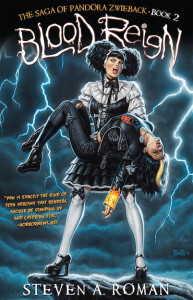 SR: For the PDF versions of StarWarp’s books, comics, and graphic novels that are sold through the company website, I have my designers deliver a lower-res version of the print files, with the covers combined with the interiors. Higher-res versions of those files are provided to places like Comixology to meet their distribution requirements.
SR: For the PDF versions of StarWarp’s books, comics, and graphic novels that are sold through the company website, I have my designers deliver a lower-res version of the print files, with the covers combined with the interiors. Higher-res versions of those files are provided to places like Comixology to meet their distribution requirements.
However, the Pandora Zwieback novels get mass distribution and require separate file formats for Kindle, Nook, and Smashwords (who distribute to iTunes, Kobo, and Oyster Books), so I outsource them to an e-book conversion company called 52Novels. All I have to provide them with, other than a Word doc file of the manuscript, is the design material I want to carry over from the print versions—front cover, title page, house ads—and they put it all together. I was really happy with the work they did on Blood Feud, and they’re great people to work with, so I went back to them with Blood Reign and in all likelihood will continue to use them.
WaR: Did you find the overall process of publishing a book an easy one or especially difficult?
SR: It was difficult starting out because I had to learn the process on the fly, but strangely enough that tends to be the method I’m most comfortable with: just jumping right in and figuring it out as I go. It was the same way I got started in comics publishing, back in ’93, except for the book market I was able to rely on books like Dan Poynter’s Self-Publishing Manual and Self-Publishing for Dummies for guidance. And I had some familiarity with the ins and outs of the industry, having been an editor for ten years at a New York publishing house called ibooks, inc. (no relation to Apple’s iBooks).
What made the process of reinventing StarWarp as a book publisher a bit easier was in hiring the designers I worked with at ibooks, inc., so I’d be working with people I knew, and who were familiar with my methods. The rest of the business stuff, though, was up to me.
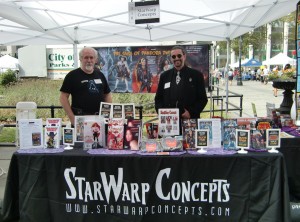 WaR: Let us know a marketing or promotional tip or piece of advice that has worked well for you.
WaR: Let us know a marketing or promotional tip or piece of advice that has worked well for you.
SR: One of my friends in publishing suggested exhibiting at book festivals. With my background up to that point mainly being in comics, I wasn’t sure how that would work out. But considering the responses StarWarp Concepts has gotten at the Brooklyn Book Festival and BookCon over the years, I’d have to say that was pretty good advice!
WaR: What are you working on next?
SR: Blood & Iron is the third Pandora Zwieback novel, and it wraps up the “vampire war” storyline that runs in Blood Feud and Blood Reign. I’m also looking at putting together Lorelei Presents: Return to House Macabre, another one-off anthology comic for Lorelei to host; I’ve already got two stories in-house.
And that’s the end of the interview. Thanks go out to Steve Williams and the folks at Write a Revolution for running it last year—as publisher of and main writer for StarWarp Concepts, I’m always appreciative of sites who show a little love toward our endeavors. Who knows where the next interview will appear…?

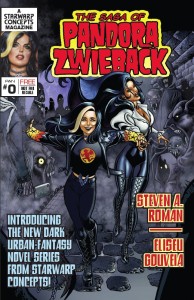 WaR: Have you tried giving anything away for free or include special offers to try and entice readers? E.g. free chapters, promotional items, limited day price reductions.
WaR: Have you tried giving anything away for free or include special offers to try and entice readers? E.g. free chapters, promotional items, limited day price reductions.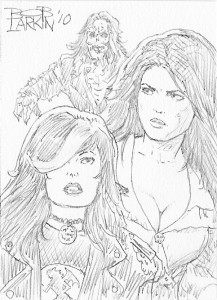 For the 2011 New York Comic Con, I used the show’s database to contact people who’d listed the StarWarp booth as one of their planned visiting points, and e-mailed them certificates for exclusive Pandora Zwieback sketch cards that the novels’ cover painter, Bob Larkin (who used to work for publishers like Marvel and Bantam), had done for me. Only one guy showed up to claim a card—and even he didn’t really want it. He’d come to the booth to find out what was going on with Lorelei! (laughs)
For the 2011 New York Comic Con, I used the show’s database to contact people who’d listed the StarWarp booth as one of their planned visiting points, and e-mailed them certificates for exclusive Pandora Zwieback sketch cards that the novels’ cover painter, Bob Larkin (who used to work for publishers like Marvel and Bantam), had done for me. Only one guy showed up to claim a card—and even he didn’t really want it. He’d come to the booth to find out what was going on with Lorelei! (laughs) WaR: What level or research and planning goes into each project you undertake at StarWarp?
WaR: What level or research and planning goes into each project you undertake at StarWarp?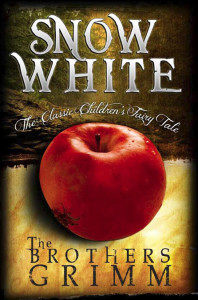 The Illustrated Classics line we have—which right now consists of the vampire novella Carmilla, Edgar Rice Burroughs’ A Princess of Mars, and the Brothers Grimm’s Snow White—are chosen for various reasons: they’re well-written books I enjoy; there’s some movie or event I can tie them to; or I know they’ll appeal to dark fantasy fans. Carmilla involves vampires, so that was a no-brainer—vampires will never go out of style. A Princess of Mars was published to take advantage of Disney’s John Carter movie, since the movie’s based on that novel. Snow White came about because I found a children’s storybook published in the late 1800s, with pristine, full-color illustrations; since the book was in the public domain, we scanned the art and released it as an e-book. And the original spot illustrations for Carmilla and Princess—all done by Eliseu Gouveia—are a major selling point for those books, especially at conventions.
The Illustrated Classics line we have—which right now consists of the vampire novella Carmilla, Edgar Rice Burroughs’ A Princess of Mars, and the Brothers Grimm’s Snow White—are chosen for various reasons: they’re well-written books I enjoy; there’s some movie or event I can tie them to; or I know they’ll appeal to dark fantasy fans. Carmilla involves vampires, so that was a no-brainer—vampires will never go out of style. A Princess of Mars was published to take advantage of Disney’s John Carter movie, since the movie’s based on that novel. Snow White came about because I found a children’s storybook published in the late 1800s, with pristine, full-color illustrations; since the book was in the public domain, we scanned the art and released it as an e-book. And the original spot illustrations for Carmilla and Princess—all done by Eliseu Gouveia—are a major selling point for those books, especially at conventions. It was close to a year ago that I contacted Steve Williams, the power behind Write a Revolution—a website dedicated, as you might expect, to promoting writers—about the possibility of WaR interviewing me to promote StarWarp Concepts and its titles. After reading
It was close to a year ago that I contacted Steve Williams, the power behind Write a Revolution—a website dedicated, as you might expect, to promoting writers—about the possibility of WaR interviewing me to promote StarWarp Concepts and its titles. After reading 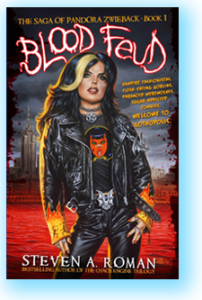 WaR: In the young adult novels Blood Feud and Blood Reign, you introduce Pandora Zwieback. Who is Pandora and what’s her story?
WaR: In the young adult novels Blood Feud and Blood Reign, you introduce Pandora Zwieback. Who is Pandora and what’s her story?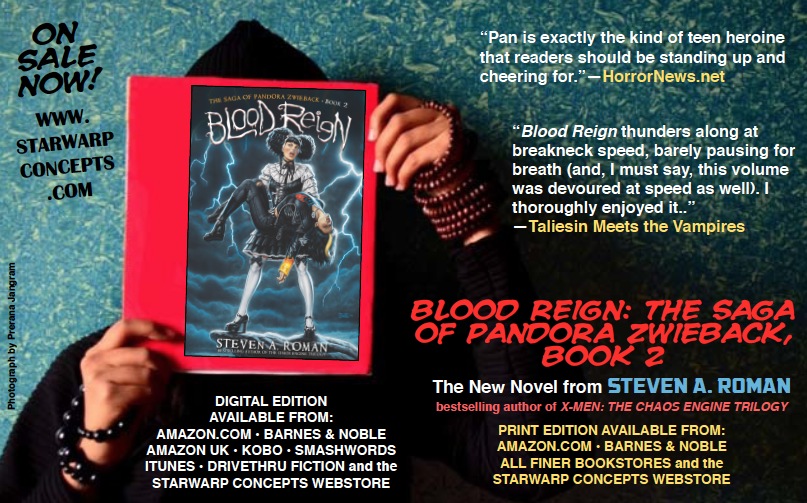


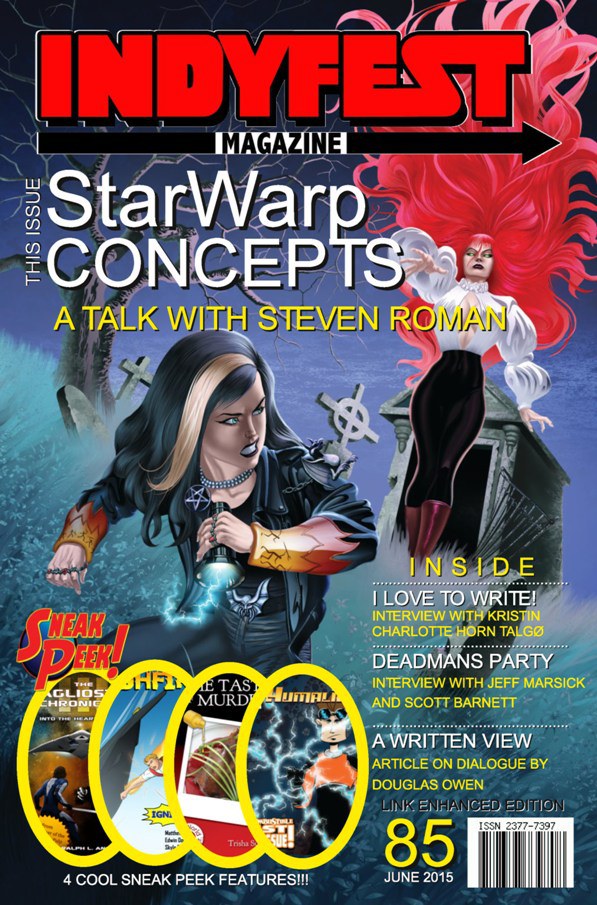
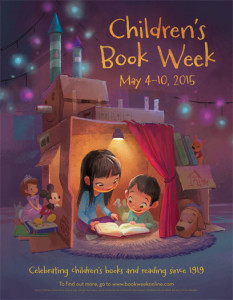 In case you hadn’t heard, this week marks the 96th anniversary of
In case you hadn’t heard, this week marks the 96th anniversary of  Blood Feud: The Saga of Pandora Zwieback, Book 1
Blood Feud: The Saga of Pandora Zwieback, Book 1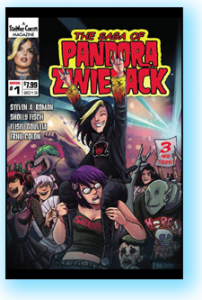 Snow White
Snow White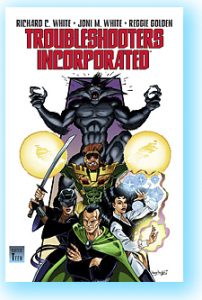 Troubleshooters, Incorporated: Night Stalkings
Troubleshooters, Incorporated: Night Stalkings